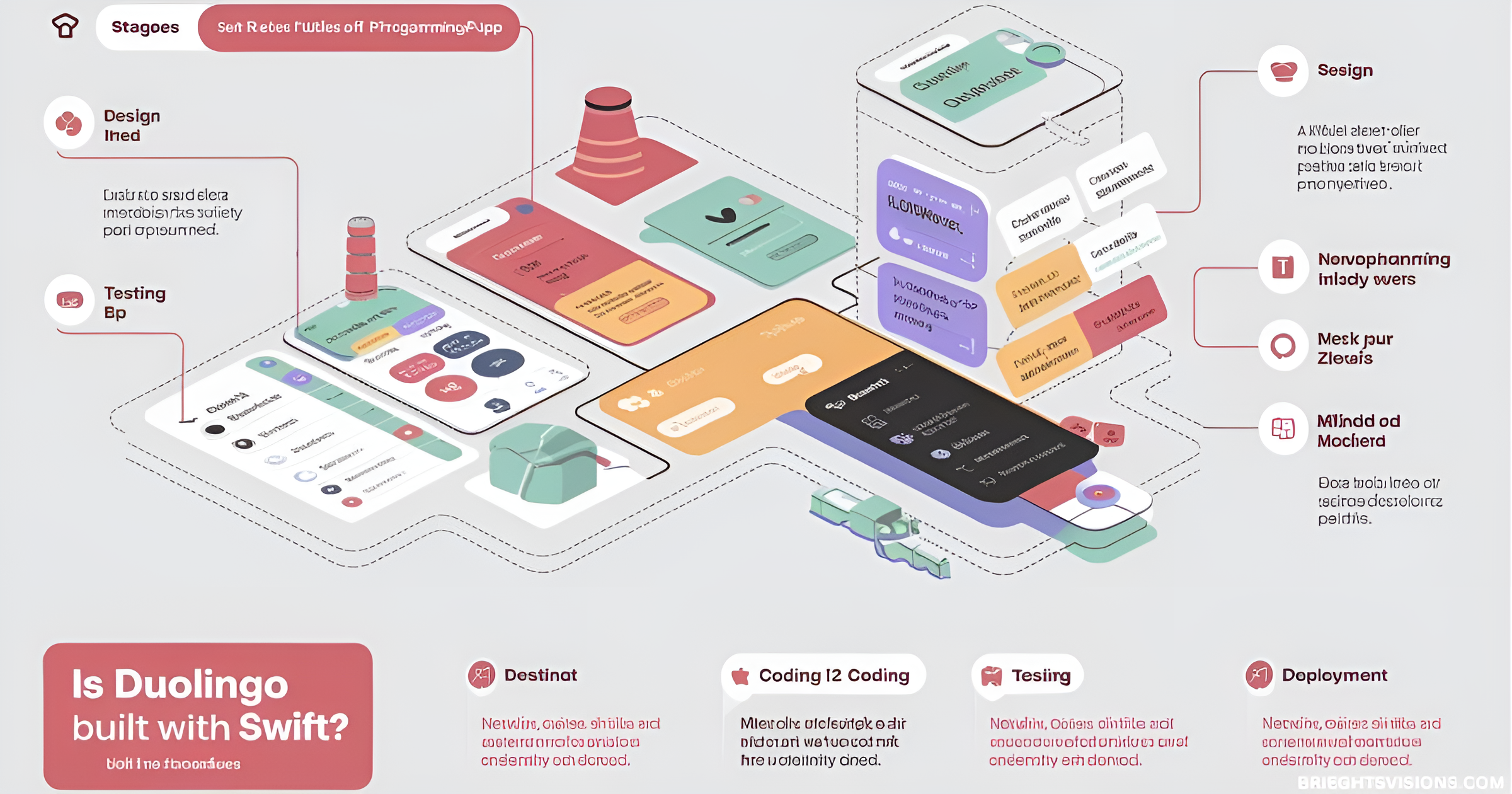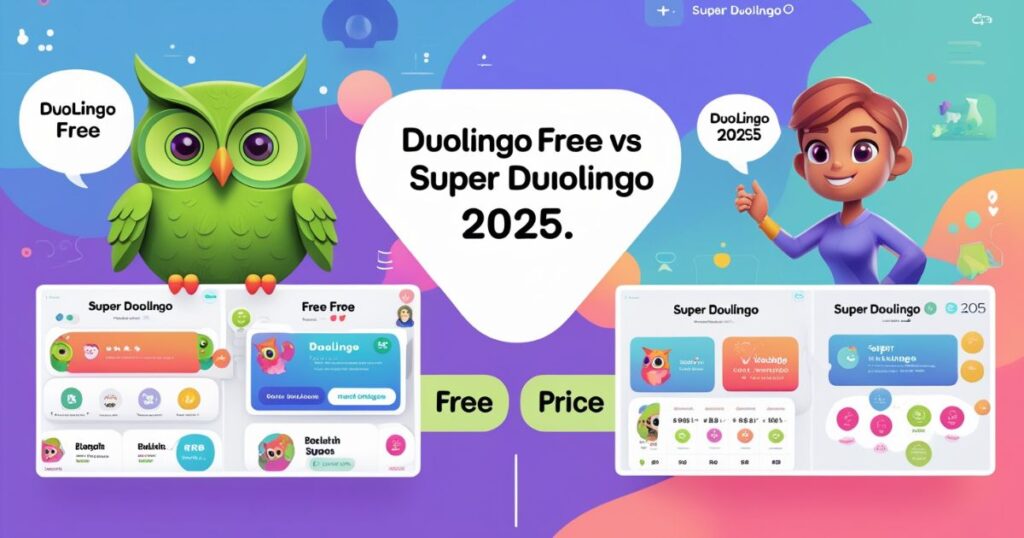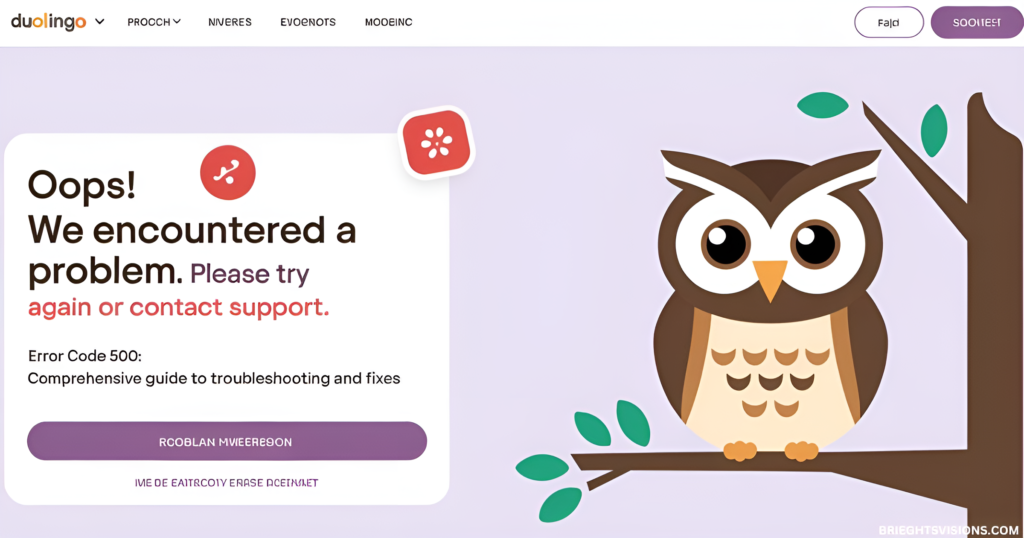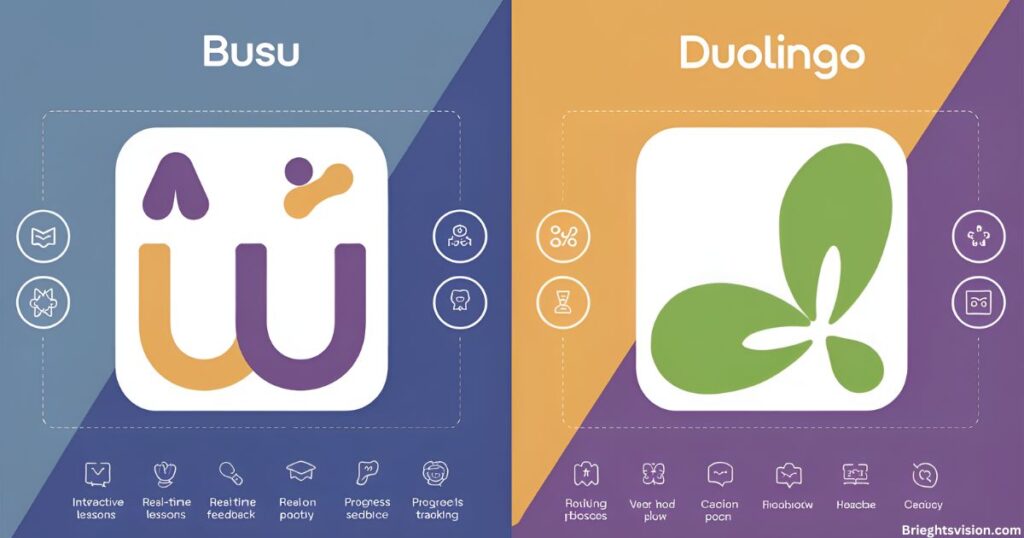Duolingo, founded in 2011, has revolutionized language learning through innovative app development. As the leading language learning platform, it utilizes modern technologies like Swift for iOS, Kotlin for Android, and Python for backend services. Its seamless transition from Objective-C to Swift marked a pivotal moment, boosting app performance and scalability.
With over 500 million users, Duolingo employs a robust technical architecture that integrates AWS services for scalability and Spotinst’s Elastigroup for cost-efficiency. This approach ensures reliability and enhances the user experience, cementing Duolingo’s reputation as a trailblazer in language learning apps and scalable infrastructure design.
How Swift Powers Duolingo’s Mobile Architecture
When Swift, Apple’s proprietary programming language, launched in 2014, it revolutionized iOS development with features like compile-time safety, simplified memory management, and robust error handling. Recognizing these benefits, Duolingo began integrating Swift into its mobile architecture, enhancing performance and reliability.
This adoption allowed Duolingo to optimize user experience, minimize crashes, and streamline development processes, ensuring the app remained a leader in language learning platforms. Swift’s emphasis on code safety and efficient memory usage has made it instrumental in powering Duolingo iOS applications, reinforcing its reputation as a dependable and innovative tool for millions of global users.
Why Swift?
- Type Safety: Swift’s static type system prevents type-related errors early in the development process.
- Custom Operators: These enhance code readability and flexibility, improving how developers express logic.
- Compatibility: Swift’s ability to interoperate with Objective-C made it easier for Duolingo to integrate the language gradually.
How Swift Fits Duolingo’s Needs
Duolingo, the world’s leading language learning platform, adopted Swift in 2014 to enhance its mobile ecosystem integration. With over 500 million users, Swift’s static type system and compile-time safety ensure robust app performance. By improving memory management and reducing runtime errors, Duolingo achieves a seamless user experience across devices.
The platform’s transition from Objective-C to Swift modernized its technical architecture, offering enhanced scalability and reliability. As Duolingo continues to innovate, Swift remains a cornerstone of its development strategy, driving the app’s growth and ability to deliver exceptional language learning solutions worldwide.
Key Features of Duolingo’s Swift-Powered iOS Apps
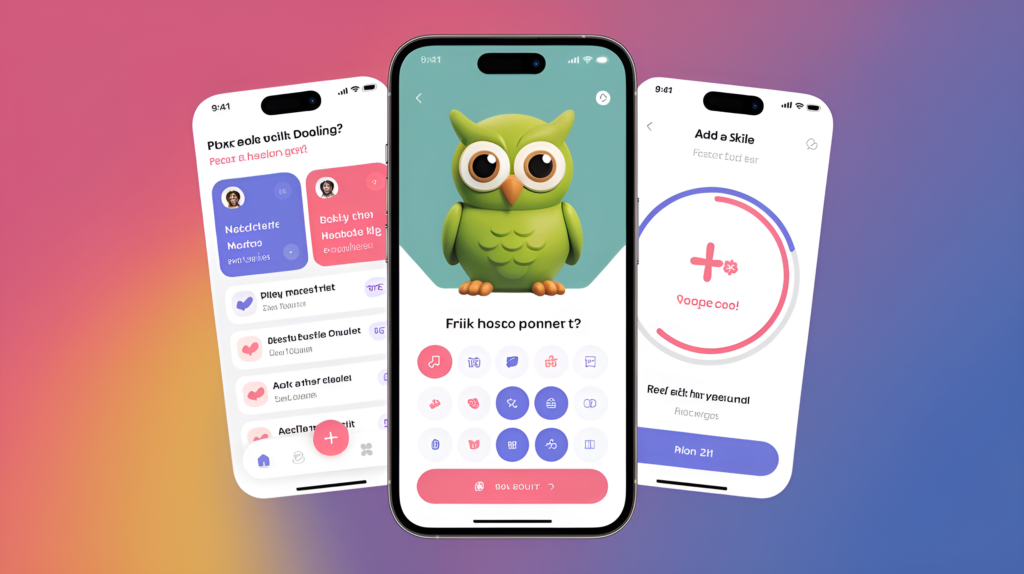
Swift has significantly boosted the functionality and performance of Duolingo’s iOS apps. With powerful features like function overloading, value types, and generics, Swift allows developers to write more efficient and maintainable code. These enhancements not only improve code safety but also simplify app upkeep, ensuring a seamless user experience.
Since adopting Swift in 2014, Duolingo has streamlined its development processes and optimized app performance. These advancements have increased the app’s reliability and scalability, allowing it to support millions of active users every day—solidifying Duolingo’s position as a leader in the language learning app market.
Benefits of Core Swift Features
These features ensure app reliability, reduce crashes, and contribute to a seamless user experience design.
| Feature | Benefit |
| Custom Operators | Enhances code readability and expressiveness. |
| Function Overloading | Improves flexibility and type safety in iOS development. |
| Value Types | Simplifies memory allocation and ensures thread-safe programming. |
| Generics | Enables reusable, type-safe code for collections and data models. |
Duolingo’s Transition from Objective-C to Swift
The shift from Objective-C to Swift marked a transformative phase in Duolingo’s app development journey. Leveraging Swift’s compatibility with Objective-C, Duolingo adopted a gradual rollout strategy to ensure smooth integration without disrupting functionality. Developers underwent intensive training to master Swift’s static type system and syntax rules, enabling them to harness its advanced features effectively. Rigorous testing protocols ensured the stability and maintainability of the codebase throughout the process.
Despite its advantages, the transition presented challenges. The team faced a steep learning curve, adapting to Swift’s compile-time safety and features like Optional and Result types. Additionally, maintaining interoperability between legacy Objective-C components and new Swift modules required meticulous coordination, underscoring Duolingo’s commitment to innovation.
Technical Architecture Behind Duolingo’s Platform
Duolingo’s technical architecture is designed to deliver high performance and stability while supporting its massive global user base. The platform’s backend relies on Python and Java, ensuring efficient processing and scalability. To manage its vast data requirements, AWS services like DynamoDB, EMR, and S3 provide robust storage and processing capabilities.
Cloud computing plays a pivotal role, with Spotinst’s Elastigroup reducing resource costs by an impressive 25%. This infrastructure supports over 500 million predictions daily and real-time interactions across its multilingual platform, ensuring a seamless learning experience. By leveraging advanced cloud tools, Duolingo effectively manages costs while maintaining its ability to scale, accommodating millions of learners worldwide.
Security Features in the Duolingo Test Center App
The Duolingo Test Center, launched in 2016, is a prime example of how Duolingo enhances security in its language certification process through Swift. By leveraging Swift’s robust multimedia capabilities, the app records video during tests, effectively deterring any attempts at cheating.
In addition, Duolingo prioritizes user data security by employing strong encryption practices within the app, ensuring sensitive information remains protected. These features combine to create a secure, trustworthy platform for users seeking official language certification. Swift’s seamless integration not only optimizes the app’s functionality but also fortifies its security.
Helping Duolingo maintain its reputation as a reliable, cutting-edge language learning tool. With these security measures in place, users can confidently demonstrate their language skills, knowing their data and testing experience are safe.
Key Benefits of Swift in Duolingo’s Mobile Ecosystem
Since 2014, Duolingo has leveraged Swift, Apple’s powerful programming language, to transform its iOS app. The adoption of Swift brought significant benefits, including enhanced performance, seamless memory management, and robust error handling. These features enable Duolingo to deliver a smoother user experience, reducing crashes and ensuring app reliability for its 500 million+ global users. Swift’s type safety and compile-time error detection ensure a cleaner, more maintainable codebase, critical for scaling the platform.
Additionally, Swift’s interoperability with Objective-C facilitated a smooth transition during the migration phase. Duolingo’s decision to embrace Swift aligns with its mission to stay at the forefront of innovation in language-learning technology. This strategic integration has not only boosted app scalability but also reinforced its position as the leading language-learning app worldwide.
Performance Optimization with Swift

Duolingo’s decision to adopt Swift for its iOS apps has significantly improved performance. By leveraging Swift’s efficient memory management and streamlined concurrency, the platform ensures faster execution and a seamless user experience. Since the transition began in 2014, Duolingo has focused on optimizing app stability, enhancing reliability, and reducing crashes.
Key features like Optional and Result types in Swift contribute to safer code and better error handling, crucial for maintaining quality with a massive user base of over 500 million. Additionally, Swift’s integration with Apple’s ecosystem allows Duolingo to stay ahead in delivering responsive, engaging apps. This commitment to performance and innovation highlights Duolingo’s dedication to offering the best experience to language learners worldwide.
Advantages of Swift for Performance
Duolingo has significantly enhanced app performance by leveraging Swift, Apple’s robust programming language. Key advantages include memory management, where Swift’s automatic memory allocation optimizes resource usage, ensuring smooth operations.
Its concurrency features allow Duolingo to handle multiple tasks seamlessly, preventing lags or crashes even during peak usage by 500 Million+ users. Additionally, error handling in Swift, through its Optional and Result types, minimizes runtime errors, keeping the app reliable.
Introduced in 2014, Swift has empowered Duolingo’s transition from Objective-C, improving scalability and user experience. This dedication to cutting-edge technology positions Duolingo as a leader in mobile app development, delivering a secure and high-performing platform for millions of language learners globally..
Duolingo’s Cross-Platform Development Approach
Duolingo showcases its technical expertise by embracing a cross-platform development strategy. By leveraging Swift for iOS, Kotlin for Android, and TypeScript for web development, Duolingo ensures seamless performance tailored to each platform.
This strategy highlights Duolingo’s commitment to delivering a unified user experience across devices, making language learning accessible to millions. Their backend architecture, powered by Python and Java, supports scalability and innovation, enabling efficient handling of their 500 million+ user base.
This thoughtful approach balances platform-specific advantages with an overarching consistency, ensuring users enjoy engaging, high-performance applications regardless of the device they use. Duolingo’s engineering skill in navigating the challenges of multi-platform development has positioned it as a leader in the tech-driven language-learning market, delivering on its mission to make education universally accessible.
- More Post: Duolingo Tips and Tricks: Master Your Language Learning Journey
- More Post: Setting Up and Managing Your Duolingo Classroom :2024
Tools and Frameworks
Duolingo employs a strategic mix of tools and frameworks to deliver a seamless user experience across platforms. For iOS, the app is built using Swift, leveraging its native support with Apple’s ecosystem for optimized speed and stability. On Android, Kotlin is the preferred language due to its simplified syntax and strong interoperability with Java, ensuring flexibility in development.
For web applications, TypeScript plays a key role, offering strong typing and scalability, crucial for handling Duolingo’s large user base. This deliberate selection of tools and frameworks reflects Duolingo’s focus on innovation and efficiency, enabling the platform to cater to millions of learners worldwide. By embracing the strengths of each technology, Duolingo ensures its apps remain reliable, fast, and engaging across all devices.
Backend Integration in Duolingo’s Architecture
Duolingo’s backend services rely on the combined power of Python and Java, ensuring a solid foundation for its operations. These programming languages provide the backbone for cloud computing tasks, enabling seamless data processing and reliable performance. With Python’s flexibility and Java’s scalability, Duolingo handles the demands of its massive user base effortlessly.
This architecture supports the app’s advanced features, from real-time updates to complex data analytics, ensuring a seamless experience for users worldwide. The integration of these technologies highlights Duolingo commitment to innovation and scalability, allowing it to grow alongside its audience. By leveraging these backend solutions, Duolingo remains a leader in language learning while delivering unparalleled reliability and functionality.
What’s Next for Duolingo’s Swift-Powered Architecture?
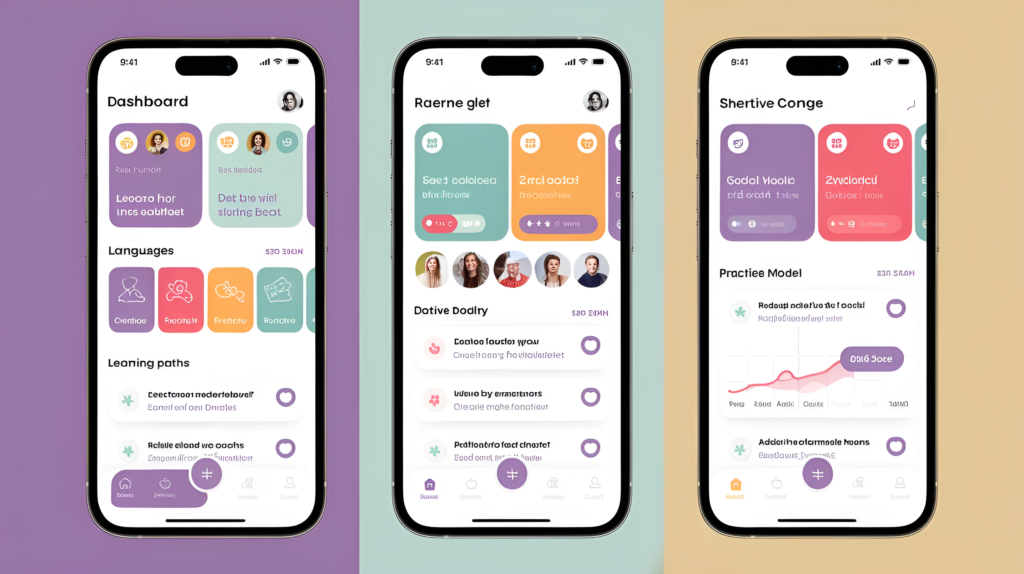
As Duolingo continues to lead the language-learning market, its commitment to innovation remains unwavering. Having adopted Swift in 2014, Duolingo transformed its iOS app’s performance and scalability. Moving forward, the platform plans to integrate SwiftUI, a modern UI framework, to enhance design flexibility and streamline development.
With over 500 million+ users globally, Duolingo aims to leverage Swift’s advanced memory management and concurrency features to improve real-time interactivity and responsiveness. Upcoming updates will focus on incorporating AI-driven personalization, allowing users to experience tailored language-learning journeys.
Additionally, deeper integration with Apple’s ecosystem, such as iOS 17 enhancements, will ensure Duolingo remains cutting-edge. By continuously refining its Swift-powered architecture, Duolingo is poised to deliver an even more engaging, scalable, and reliable experience for learners worldwide.
Future of Swift Development at Duolingo
Duolingo is committed to staying ahead in the competitive world of language learning apps by embracing the continuous evolution of Swift. With a focus on integrating the latest features, Duolingo aims to further refine the performance and stability of its apps.
Moving forward, Duolingo will harness Swift’s advanced improvements, particularly in memory management and code safety, to enhance user experiences. Additionally, the app is set to incorporate AI-powered tools, which will personalize language learning journeys for each user, making the process more efficient and tailored to individual needs.
Another exciting development is Duolingo’s deepened integration with the Apple ecosystem, particularly through tools like SwiftUI, which will allow for even more seamless and powerful mobile app frameworks. As Duolingo looks ahead, these updates promise to keep it at the forefront of innovative language education, offering enhanced features and better overall performance.
Future-Proofing Duolingo with Swift and AI Technologies

Duolingo is strategically leveraging Swift and AI technologies to ensure its continued success and relevance in the ever-evolving landscape of language learning. Swift, with its fast performance, memory management, and robust error handling, is a key player in optimizing.
Duolingo’s mobile experience, ensuring that the app remains scalable as its user base grows. The integration of AI-driven personalization allows Duolingo to adapt lessons to each learner’s needs, offering tailored content that boosts engagement and retention.
Looking forward, Duolingo plans to enhance these technologies further by integrating SwiftUI for improved user interfaces and incorporating more machine learning models to create even smarter, more responsive learning paths. By combining the strengths of Swift and AI, Duolingo is not only enhancing its current offerings but also setting the stage for future innovations that will keep it at the forefront of digital language learning.
Frequently Asked Question
Why Did Duolingo Switch from Objective-C to Swift?
The shift ensured better performance, code maintainability, and alignment with modern iOS development standards.
How Does Duolingo Balance Cross-Platform Development?
Duolingo uses platform-specific languages—Swift for iOS, Kotlin for Android, and TypeScript for the web—for optimal performance.
What language is Duolingo built with?
Duolingo uses Swift for iOS, Kotlin for Android, and Python and Java for backend services.
What framework does Duolingo use?
Duolingo leverages AWS Elastic Beanstalk, DynamoDB, and S3 for backend frameworks, enhancing scalability and data management.
What technology does Duolingo use?
Duolingo employs Swift, Kotlin, Python, AWS Services, and advanced machine learning models to power its platform.
What operating system does Duolingo use?
Duolingo supports iOS and Android operating systems, ensuring seamless language-learning experiences across mobile devices globally.
Does Duolingo use Swift?
Yes, Duolingo uses Swift for its iOS apps, ensuring stability, efficiency, and integration within Apple’s ecosystem.
What algorithm does Duolingo use?
Duolingo employs personalized learning algorithms, leveraging spaced repetition to improve retention and maximize learning efficiency.
How does Duolingo make money?
Duolingo generates revenue through subscriptions, advertising, and its English proficiency test, catering to both free and paid users.
Is Duolingo good for learning a new language?
Yes, Duolingo offers effective language learning with gamified lessons, personalized practice, and progress tracking for over 40 languages.
How many users does Duolingo have?
As of 2024, Duolingo serves over 500 million users worldwide, making it a leading language-learning platform.
What makes Duolingo unique?
Duolingo combines gamification, adaptive learning, and AI-driven lessons to create a fun and effective language-learning experience.
Does Duolingo work offline?
Yes, Duolingo offers an offline mode for premium users, allowing language practice without an active internet connection.
What is Duolingo’s English proficiency test?
Duolingo’s English Test is an affordable, online certification exam accepted by over 4,000 institutions globally.
How does Duolingo track progress?
Duolingo tracks progress using streak counts, XP points, and skill levels, motivating users to achieve their learning goals consistently.
Conclusion
Duolingo’s integration of Swift has played a pivotal role in enhancing its iOS app’s performance, scalability, and user experience. By leveraging Swift’s memory management, type safety, and error handling, Duolingo ensures seamless operation for its 500 million+ users worldwide. Its gradual transition from Objective-C modernized its technical architecture, aligning with the latest iOS development standards.
Coupled with a robust backend powered by Python, Java, and AWS services, Duolingo demonstrates a commitment to innovation and reliability. As a leader in language-learning platforms, Duolingo continues to utilize cutting-edge technologies to deliver a top-tier experience. Its strategic adoption of Swift not only reinforces its scalability but also positions the platform for future advancements in mobile app development.
Visit For More Blog’s: brieghtsvision.com

Welcome to Brieghtsvision.Com!
Your one-stop place for tips and guides to get the most out of Duolingo. Make learning a new language easier with helpful content for learners of all levels.
